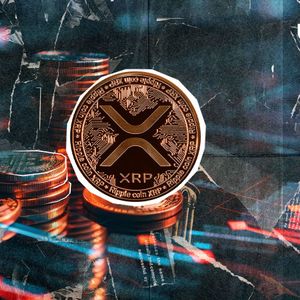Here’s How Much XRP Available for Business Operation
4 min read
Software engineer Vincent Van Code published a detailed breakdown on Twitter addressing what he describes as a widespread misconception surrounding the total XRP supply. While XRP is often cited as having a 100 billion token maximum supply, Van Code emphasizes that the figure does not reflect the volume truly accessible for business operations such as payments, cross-border settlement, or liquidity provision. In the tweet, Van Code systematically reviews various categories of XRP holdings and exclusions to establish a more accurate estimate of XRP realistically available for real-world financial applications. He identifies substantial constraints that significantly reduce the actual liquid supply from the total minted amount. How Much XRP Is Actually Available for Business Use? Everyone talks about “100 billion XRP” — but how much is truly liquid and usable for payments, liquidity, or cross-border settlements? Let’s break it down. The number may shock you. — 1. Total XRP Supply = 100B But… — Vincent Van Code (@vincent_vancode) July 19, 2025 Ripple’s Escrow Holdings and the Predictable Lockup Mechanism Van Code first highlights Ripple’s escrow management , which currently accounts for approximately 40 billion XRP. These tokens are released in fixed increments of 1 billion XRP per month, but according to Van Code, most of the released XRP is typically returned to escrow. He estimates that, on average, about 800 million XRP is re-escrowed monthly. Despite the predictable schedule of escrow releases, he maintains that this XRP is not practically liquid and therefore unsuitable for immediate use in fast-moving markets or real-time liquidity provisioning. Lost XRP and Dormant Wallets The tweet also examines the volume of XRP that may be permanently inaccessible. Drawing a parallel with Bitcoin, Van Code suggests that between 5 and 8 billion XRP is likely lost due to forgotten private keys, abandoned wallets, and early-user inaccessibility. This segment, while not officially removed from the circulating supply, no longer plays an active role in the ecosystem. He equates this to roughly 5–8% of the total XRP ever created. Institutional and Whale Accounts Another component examined is the large amount of XRP held by institutions and early stakeholders, including Ripple founders, exchanges, and venture capital firms. These wallets, estimated to hold between 20 and 25 billion XRP, are characterized by low transaction activity. Van Code points out that many of these holders treat their XRP similarly to how investors treat long-term stores of value, preferring to hold rather than engage in frequent trading or liquidity services. He categorizes these as effectively soft-locked due to behavioral patterns. We are on X, follow us to connect with us :- @TimesTabloid1 — TimesTabloid (@TimesTabloid1) June 15, 2025 Ripple-Owned XRP Outside Escrow and DeFi Constraints Van Code identifies an additional 6 to 8 billion XRP held by Ripple outside the formal escrow structure. These holdings are reportedly used for strategic purposes such as acquisitions, incentives, or partnerships. Because these tokens are not consistently on the market, they are also excluded from his estimate of liquid supply. He then addresses emerging trends such as decentralized finance on the XRP Ledger. With the recent introduction of the XRPL Automated Market Maker (AMM), XRP is beginning to be locked in liquidity pools. While this segment is still developing, Van Code notes that DeFi mechanisms represent another constraining factor on accessible supply. Final Estimate of Liquid XRP and Market Implications Taking all these segments into account, Van Code concludes that only approximately 12 to 15 billion XRP is realistically available for open market use and business-related liquidity. This equates to just 12–15% of the full 100 billion XRP supply. He refers to this as the “estimated liquid supply,” which excludes escrowed, lost, institutional, and strategic holdings. Van Code concludes his tweet by pointing to potential market implications. He argues that if usage of XRP continues to expand through mechanisms such as On-Demand Liquidity (ODL), Central Bank Digital Currency (CBDC) bridges, and tokenized asset transactions, then the already limited liquid supply may be increasingly insufficient to meet demand. In his assessment, as more XRP is locked away or treated as a long-term asset, supply constraints could exert upward pressure on the asset’s price. This analysis offers a distinct perspective on XRP’s supply dynamics. It may inform considerations for investors, enterprises, and liquidity providers evaluating the utility and valuation of the token within the broader digital asset economy. Disclaimer : This content is meant to inform and should not be considered financial advice. The views expressed in this article may include the author’s personal opinions and do not represent Times Tabloid’s opinion. Readers are advised to conduct thorough research before making any investment decisions. Any action taken by the reader is strictly at their own risk. Times Tabloid is not responsible for any financial losses. Follow us on X , Facebook , Telegram , and Google News The post Here’s How Much XRP Available for Business Operation appeared first on Times Tabloid .

Source: TimesTabloid



